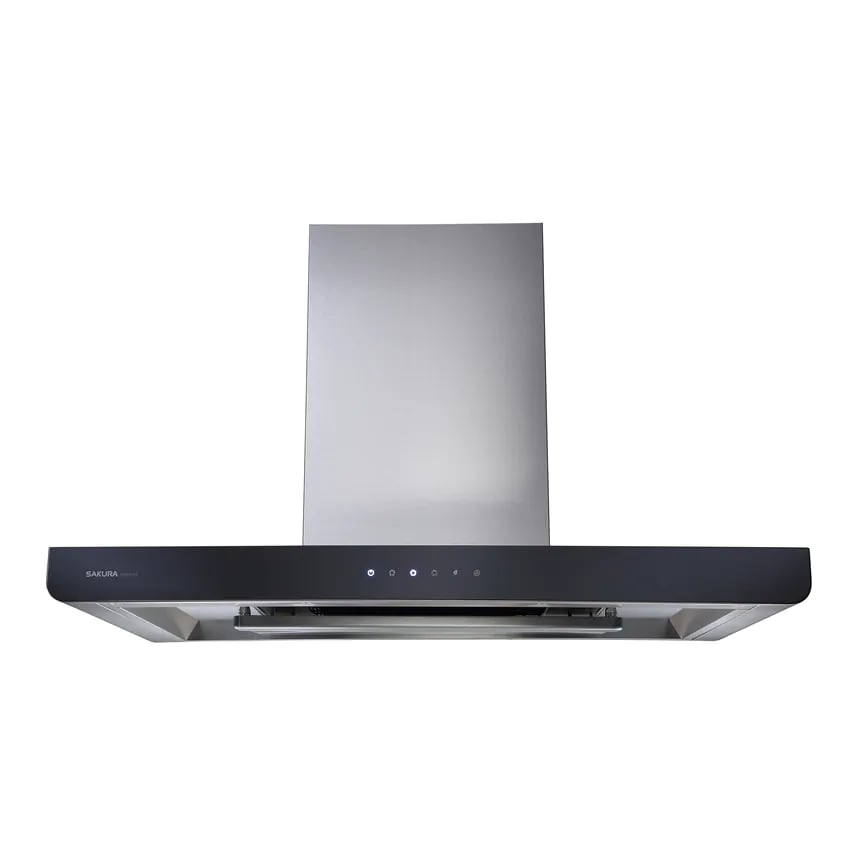

2025 Popular Cookerhood Shopping Guide & Recommendation
A clean and tidy kitchen makes cooking more enjoyable. However, not all cooker hoods have the same functions so knowing how to choose the right one will not only reduce oil and grease in your kitchen, it will also make cleaning and cooking much easier.
Principle and Types
There are two main methods of extracting grease and smoke using a cooker hood. One is the recirculating type in which air passes through a grease suction screen and a carbon filter and recirculates into the kitchen after dual purification. The other is the ventilated type whereby the fan inside the cooker hood extracts air and discharges it outside the building through an exhaust pipe. Some cooker hoods are integrated type so you can decide which you would prefer to install.
There are four main types of domestic extractor hoods:
| Types | Advantages | Disadvantages | Recommended models |
| Easily detachable hood |
|
|
(1) Taada GR6001 Built in Cookerhood 
(2) electriQ QRMA7140 Cookerhood 
|
| Chimney hood |
|
|
(1) Lighting LG-480S9 Built in Cookerhood 
(2) SAKURA RW9100 Built in Cookerhood 
|
| Slanted hood |
|
|
(1) ELECTROLUX EFS928SA Cookerhood 
(2)NUTZEN NRHN-400 Built in Cookerhood 
|
| Telescopic hood |
|
|
(1) GERMAN POOL TFT700 Cookerhood 

|
Each model has its own advantages and disadvantages. Consider the following before you buy.
Points to consider before buying
1. Kitchen environment
A lot depends on the size and location of your cooker hob. The ideal size for a hood should be slightly larger than the hob with a distance of about 65cm between the two. This helps to maintain the maximum extraction effect and avoid the risk of fire from accidentally touching the hood. A recirculating hood is lighter and suitable for most kitchens. The ventilation type is more effective, but requires a short, straight exhaust pipe suitable for cooker hobs that are near windows.
2. Airflow and suction
Airflow is related to the size of the kitchen. To ensure proper air circulation in the kitchen, air should be discharged 6 to 12 times every hour. Estimate the minimum and maximum airflow required for a cooker hood using the following calculation method.
Minimum required airflow: kitchen area (m3) x 6 Maximum required airflow: kitchen are (m3) x 12
People in Hong Kong prepare both eastern and western food, so you should take into account your cooking habits when choosing a cooker hood. Chinese and Southeast Asian dishes require a lot of frying with a lot of fumes so it is advisable to select an extraction hood with high horsepower, strong suction power and high speed. In addition to the traditional top suction type, consider a slanted design to absorb the large amounts of grease and smoke in a more concentrated area. If you cook a lot of Western food, or prepare mostly cold dishes or do a lot of slow frying, you can choose a model with less suction power and focus on other factors such as ease of cleaning and power consumption. Some models are equipped with adjustable speeds and suction power to meet different cooking needs.
3. Easy to clean
A cooker hood collects grease and dirt and when a thick layer accumulates, it is difficult to clean, not to mention the dirt hidden in the crevices and edges of the fan blades. But to some extent, this means it is working properly so people love it and hate it at the same time. Fortunately nowadays, many models come with new technology and are designed to reduce the difficulties of cleaning:
Oil and smoke separation patent technology:effectively concentrates oil in one area and prevents it from reaching other areas.
Anti-oil and oil-reducing coating:reduces oil accumulation and keeps the hood and fan blades clean for a long time.
Hydrophilic coating grease trap:When cleaning with water, grease floats away immediately, saving water and energy.
Easy detachable filter:easy to remove and install, suitable for those who cook every day.
Heating function:dissolves solidified grease into an oil cup so say goodbye to ancient grease that is difficult to get rid of.
Of course, even with smart technology and good design, the hood still needs to be cleaned regularly to avoid accumulation of grease and dirt, maintain optimum performance and condition and reduce the risk of fire.
4. Others
Power consumption and noise level
For the sake of the environment and your wallet, a cooker hood with low power consumption is more appealing. In addition to models with energy-saving LED lighting systems, choose one with a time delay and auto shut-off function so you can cook without worries. Some models come with a low-speed silent mode for those who prefer a quiet kitchen.
Control features
When you are busy cooking, choose a model with temperature sensitive, switch-on functions and gesture controls.
Stylish look
If you go for appearance, there are eye-catching extractor hood models constructed from stainless steel and tempered glass. Some have a holographic projection control panel with hidden control switches and an ultra-slim body. They are not only beautiful, but also easy-to-clean and create a sense of space.
You decide. Use the Fortress comparison chart to find the cooker hood that’s best for you!

